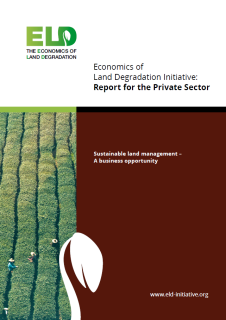
With around one-third of the world’s arable land degraded, estimated annual losses of 6.3 to 10.6 USD trillion, and a projected need to increase food production from land by 70 percent by 2050, we simply cannot afford to neglect the loss of potential production from careless land management. Whenever land is not producing at its potential, it is an underperforming asset that requires investments to ensure the future supply chains that many industries depend upon.
Sustainable land management and landscapes are now beginning to be recognised as central to the achievement of the global agendas such as the Sustainable Development Goals, and the UN climate, biodiversity, and desertification conventions. This shift in the political landscape creates substantial rewards for businesses that invest in sustainable land management in their value chains. Expected returns on investment are high for more at-risk sectors, including food and beverages, construction, utilities, mining, renewable biomass energy, clean and reliable water supplies, etc. At the same time, investments create ‘shared value’ that equitably benefit all involved in land management. With up to 2 billion hectares suitable for restoration/rehabilitation, a reversal of land degrading trends will contribute to multiple benefits while helping to address the great challenges of climate change, biodiversity loss, alleviation of poverty, and hunger.
In this report, the Economics of Land Degradation (ELD) Initiative outlines opportunities and benefits for the private sector in directly and indirectly investing in sustainable land management. These come through improved yields of goods like food, fibre, and timber, new business opportunities and novel markets, and creating and ensuring social “licences to operate”. It builds on the previous report on the assessment of business exposure to land degradation risk from 2013.
